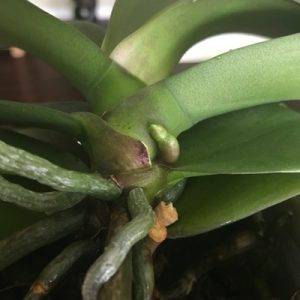When do orchids grow new spikes? This is a common question among orchid enthusiasts. The answer, unfortunately, is not as straightforward as we would like it to be.
Orchids are finicky plants and their growth patterns can be affected by a variety of factors, including temperature, light, humidity, and nutrition. So, when your orchid starts to look leggy and bare, don’t despair! With a little patience and care, you should see new spikes emerging in no time.
For many growers, one of the most exciting moments in orchid care is when their plant produces a new spike. These new growths are often a sign that the plant is healthy and thriving. But when do orchids actually grow new spikes?
The answer to this question depends on the type of orchid. Some species, like Phalaenopsis, can produce new spikes at any time of year. Others, like Cattleya, typically only produce them during the spring and summer months.
If you’re wondering when your orchid might start growing a new spike, it’s best to consult with an expert. They’ll be able to tell you which type of orchid you have and what its normal bloom cycle is. With this knowledge in hand, you’ll be able to better predict when your plant will put on a fresh show of flowers!

Credit: www.ohiotropics.com
How Long Does It Take for an Orchid to Grow a New Spike?
It can take an orchid several months to grow a new spike. The amount of time it takes will depend on the type of orchid, as well as the growing conditions. For example, if the plant is healthy and receiving enough light, water and nutrients, it will likely produce a new spike more quickly than if it is stressed or not getting enough of these things.
Additionally, some types of orchids produce spikes more readily than others. So, if you’re wondering how long it will take for your particular plant to grow a new spike, it’s best to ask your local nursery or other expert source.
Will My Orchid Grow a New Flower Spike?
If you want your orchid to grow a new flower spike, there are a few things you can do to encourage it. First, make sure the plant is healthy and getting enough light, water, and nutrients. If it isn’t growing well, it’s unlikely to produce a new flower spike.
Second, remove any spent flowers or spikes. This signals to the plant that it’s time to produce more flowers. Finally, give the plant a little extra TLC – Orchids are finicky plants and sometimes need a little extra attention to bloom.
With a little care, your orchid should soon produce a beautiful new flower spike!
How Often Do Orchids Grow Spikes?
Orchids typically bloom once a year, but some species will bloom more frequently. The frequency with which an orchid produces spikes depends on the type of orchid, as well as the growing conditions. For example, Phalaenopsis orchids grown in high light and given regular fertilizer will often bloom two to three times a year.
Orchids that are not actively growing (i.e., they are resting) may not produce any spikes at all during that time.
How Do I Know If My Orchid is Growing a New Stem?
If you’re wondering whether or not your orchid is growing a new stem, there are a few things you can look for. First, take a look at the base of the plant where the stem meets the roots. If you see any new growth here, it’s likely that your orchid is indeed growing a new stem.
Another telltale sign is if you see any new leaves emerging from the center of the plant. This is a good indicator that your orchid is healthy and continuing to grow. Finally, if you notice any flowers blooming on the plant, this is also a strong indication that new growth is happening.
So if you see any combination of these signs, it’s safe to say that your orchid is growing a new stem!
Phalaenopsis Orchids – How I get multiple flower spikes! 🌸🌸🌸
Orchid New Spike Vs Root
If you are growing orchids, you may be wondering about the difference between a new spike and a root. Here is some information to help you understand the difference.
A new spike is a growth that comes out of the side of an existing stem.
It will have leaves and will eventually produce flowers. A root, on the other hand, is a growth that comes out of the bottom of the plant. Roots anchor the plant in the potting mix and absorb water and nutrients from the soil.
Orchid Spike Growing Sideways
If you’ve ever seen an orchid in bloom, you know that they are absolutely stunning. But what you may not know is that sometimes, an orchid’s spike can grow sideways. This can be caused by a variety of factors, including incorrect watering, excessive heat, or even pests.
If your orchid’s spike is growing sideways, the first thing you need to do is check the plant for any pests. If there are none present, then it’s likely that the problem is due to incorrect watering or too much heat.
If you’re watering your orchid too much, the excess water will cause the stem to rot and eventually collapse.
This will cause the spike to grow sideways. To fix this problem, simply reduce the amount of water you’re giving your plant each week.
If excessive heat is causing your orchid’s spike to grow sideways, try moving it to a cooler location.
Orchids thrive in temperatures between 65-80 degrees Fahrenheit, so if it’s consistently warmer than that where your plant is located, it may be time for a move.
Once you’ve determined what’s causing your orchid’s spike to grow sideways and corrected the problem, simply wait for the plant to start producing new growth. With proper care, your orchid will soon be blooming beautifully once again!
Orchid Won’T Grow New Stem
If your orchid won’t grow a new stem, there are a few things you can do to encourage growth. First, make sure the plant is getting enough light. Orchids need bright, indirect sunlight to thrive.
If your plant is not getting enough light, it will be stunted and won’t produce new growth. Second, check the roots. Healthy roots are white or green and firm.
If the roots are brown or mushy, they are rotting and need to be trimmed back. Finally, make sure the potting mix is well-draining and not too dense. If the mix is too heavy, it will compact and prevent the plant from growing new roots and stems.
Is the Growth of New Spikes in Orchids Dependent on the Growth of New Leaves?
The growth of new spikes in orchids can be dependent on the growth of new leaves. when orchids grow new leaves, it indicates that they are in a stage of active growth and have enough energy reserves. This enables them to produce new spikes, which will eventually develop into flowers. Therefore, the growth of new leaves plays a crucial role in determining the growth of new spikes in orchids.
Orchid Growing New Leaves But Not Flowers
If you’re an orchid grower, you know the frustration of watching your plant produce new leaves but no flowers. While it’s natural for an orchid to go through a growth cycle where it produces new leaves, it can be frustrating when you’re waiting for flowers and they never seem to arrive. Here are some potential reasons why your orchid is growing new leaves but not flowers:
1. The plant isn’t getting enough light – Orchids need a lot of bright light in order to bloom, so if yours isn’t getting enough light, that could be the reason it’s only producing leaves. Move your plant to a brighter location and see if that encourages flowering.
2. The plant is too wet – If your plant is sitting in water or soil that’s constantly damp, that could also prevent it from blooming.
Orchids like their roots to be dryer than most other plants, so make sure the potting mix you’re using drains well and try not to overwater.
3. The temperature is wrong – Orchids prefer relatively warm temperatures in order to bloom, so if yours is in a too-cold or too-hot environment, that could inhibit flowering. Try moving your plant to a spot where the temperature stays between 60-80 degrees Fahrenheit and see if that makes a difference.
4. Nutrient deficiencies – Another possible reason for leafy growth but no flowers could be nutrient deficiencies in the soil. Make sure you’re using a fertilizer formulated specifically for orchids and that you’re following the directions on how often to fertilize properly.
Conclusion
Orchids are beautiful, tropical flowers that come in a wide variety of colors, shapes, and sizes. They’re popular houseplants, and are known for being finicky and difficult to care for. But when done right, they can be easy to maintain and will bloom frequently.
One question that people often have about orchids is “when do they grow new spikes?”
The answer to this question depends on the type of orchid. Some orchids, like Phalaenopsis or Moth Orchids, will bloom once a year and then grow a new spike afterwards.
Others, like Dendrobiums, can bloom multiple times throughout the year but will only grow new spikes after each blooming cycle. Finally, some types of orchids (like Oncidiums) can bloom continuously with no set blooming cycle – meaning they’ll just keep growing new spikes as long as they’re healthy!
So, if you’re wondering when your orchid will grow a new spike, it really depends on the type of orchid you have.
Be sure to do some research on your specific plant so you know what to expect in terms of its blooming schedule.






